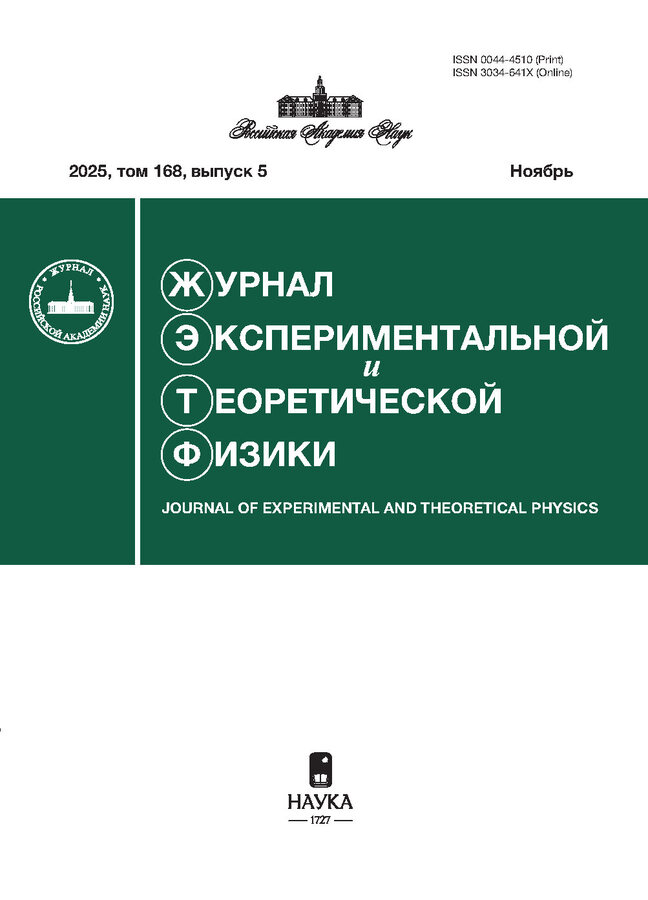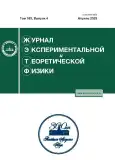Signal Separation from Thermal Neutrons in Electron–Neutron Detectors Using Convolutional Neural Nets in the ENDA Experiment
- Authors: Kurinov K.O1, Kuleshov D.A1, Lagutkina A.A2, Sten'kin Y.V1,2, Shchegolev O.B1,2
-
Affiliations:
- Institute for Nuclear Research, Russian Academy of Sciences
- Moscow Institute of Physics and Technology
- Issue: Vol 163, No 4 (2023)
- Pages: 524-530
- Section: Articles
- URL: https://journals.rcsi.science/0044-4510/article/view/145390
- DOI: https://doi.org/10.31857/S0044451023040090
- EDN: https://elibrary.ru/LVJOHJ
- ID: 145390
Cite item
Full Text
Abstract
The electron–neutron detector array (ENDA) is being created in China within the large high-altitude air shower observatory (LHAASO) project. The concept of the array is to simultaneously record the electromagnetic and hadronic components of extensive air showers (EAS) with EN detectors. To estimate the number of hadrons in an EAS, the array detectors record secondary thermal neutrons delayed relative to the shower front. Some of the delayed pulses are created by the simultaneous passage of several charged particles through the scintillator (the signal from one particle lies below the detection threshold) and by the photomultiplier noise. We propose a neutron pulse separation method for EN detectors using convolutional neural networks and make a comparison with the baseline method being currently applied at the installation.
About the authors
K. O Kurinov
Institute for Nuclear Research, Russian Academy of Sciences
Email: kyrinov.ko@gmail.com
D. A Kuleshov
Institute for Nuclear Research, Russian Academy of Sciences
Email: kyrinov.ko@gmail.com
117312, Moscow, Russia
A. A Lagutkina
Moscow Institute of Physics and Technology
Email: kyrinov.ko@gmail.com
141701, Dolgoprudnyi, Moscow oblast, Russia
Yu. V Sten'kin
Institute for Nuclear Research, Russian Academy of Sciences; Moscow Institute of Physics and Technology
Email: kyrinov.ko@gmail.com
117312, Moscow, Russia; 141701, Dolgoprudnyi, Moscow oblast, Russia
O. B Shchegolev
Institute for Nuclear Research, Russian Academy of Sciences; Moscow Institute of Physics and Technology
Author for correspondence.
Email: kyrinov.ko@gmail.com
117312, Moscow, Russia; 141701, Dolgoprudnyi, Moscow oblast, Russia
References
- Yu. V. Stenkin, Nucl. Phys. B Proc. Suppl. 196, 293 (2009).
- O. B. Shchegolev, V. V. Alekseenko, D. A. Kuleshov et al., J. Phys. Conf. Ser. 1690 (2020).
- Yu. V. Stenkin, V. V. Alekseenko, Danzengluobu et al., Bull.Russ. Acad. Sci. Phys. 85, 405 (2021).
- О. Б. Щеголев, В. В. Алексеенко, Ю. В. Стенькин и др., Изв. РАН, сер. физ. 83, 691 (2019).
- Ю. В. Стенькин, О. Б. Щеголев, Изв. РАН, сер. физ. 81, 541 (2017).
- Yu. V. Stenkin, V. V. Alekseenko, D. M. Gromushkin et al., Chinese Phys. C 37, 015001 (2013).
- G. Ranucci, Nucl. Instr. Meth. A 354, 389 (1995).
- F. Pino, L. Stevanato, D. Cester et al., J. Instrument. 10, T08005 (2015).
- J. K. Polack, M. Flaska, A. Enqvist et al., Nucl. Instr. Meth. A 795, 253 (2015).
- E. Doucet, T. Brown, P. Chowdhury et al., Nucl. Instr. Meth. A 954, 161201 (2020).
- T. S. Sanderson, C. D. Scott, M. Flaska et al., IEEE Nuclear Science Symposium and Medical Imaging Conference Record (NSS/MIC), 199 (2012).
- J. Gri ths, S. Kleinegesse, D. Saunders et al., Machine Learning: Science and Technology 1, 045022 (2020).
- Д. М. Громушкин, А. А. Петрухин, Ю. В. Стенькин и др., Изв. РАН, сер. физ. 73, 425 (2009).
- Ю. В. Стенькин, В. В. Алексеенко, А. С. Багрова и др., Изв. РАН, сер. физ. 81, 179 (2017).
- W. S. Cleveland, American Statistician 35, 54 (1981).
- P. Refaeilzadeh, L. Tang, and H. Liu, Encyclopedia of Database Systems 5, 532 (2009).
- A. Paszke, S. Gross, F. Massa et al., Advances in Neural Information Processing Systems 32, 8026 (2019).
- J. Deng, J. Guo, T. Liu et al., arXiv: 1801.07698.
- L. Van der Maaten and G. Hinton, J. Machine Learning Res. 9, 2579 (2008).
- D. P. Kingma and J. Ba, arXiv:1412.6980.
Supplementary files










